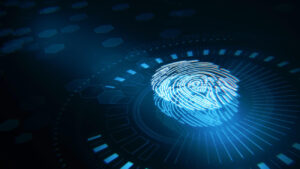Access control credentials have come a long way from ancient times where the only credentials were keys to open locks. Later on, the locks had an additional feature of a passcode to open it. Subsequently, radio frequency cards were developed. The 2000s saw the growth of biometrics, which became the most powerful access control credentials.
What are credentials?
A credential is an authentication of a person’s identity. The credential can be used to control access to physical locations, eg: door opens only on flashing a card or using fingerprint. The problem with using cards is that if they are stolen anyone can use them to gain access.
Biometrics has become the most secure credentials for access control. Fingerprints and iris patterns are unique to each individual and cannot be duplicated. This ensures perfect verification of credentials to provide access control. The pandemic saw the need for contact-less authentication. As a result, facial recognition emerged as an alternative.
Access control through facial recognition
Biometric readers can use facial recognition to grant access control. Every person’s face has unique features and the features can be used to form a pattern. This can be stored on the database. The scanner can then scan the face and compare it to the database. Thanks to the use of Artificial intelligence, facial recognition has become very robust.
AI ensures a person’s face can be recognized even there are some minor changes. For example, growing facial hair or removing facial hair or changing hairstyle will not affect the reader. This ability of AI has made facial recognition a powerful tool for access control. More and more organizations are today using facial recognition for access control.
The use of mobile cards
Mobile access cards offer a convenient way to authenticate a person’s credentials. Most smartphones today have biometric readers in the form of fingerprint scanners. An app can be installed on the mobile for authentication. The user can then use their fingerprint to open the access card on their mobile.
This ensures that no unauthorized person can use the mobile phone to gain access. The mobile phone would use NFC or Bluetooth to remotely send data to the scanner. The scanner would then recognize the user and allow access. This feature satisfies today’s need for contactless authentication.
In the days to come, facial recognition and mobile access cards would become the norm. They offer a convenient and secure way of verifying credentials for access control.
The article has been published by the editorial board of the Identity Herald. For more
information please visit www.identityherald.com




